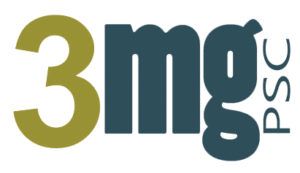Winter weather events can impact buildings by causing power outages and building damage from burst water pipes, water intrusion and wind. Commercial properties are vulnerable to these threats, so it’s important that building owners and operators prepare now for the winter season.
The Insurance Institute for Business & Home Safety (IBHS), a non-profit that researches ways to prevent damage from severe weather, provides a free Winter Weather Ready checklist for building preparation and business continuity guidance.
As we head into the heart of the winter season, most regions of the country will experience large temperature swings at some point. This can even include parts of the Deep South not normally known for its ability to drop below freezing. Additionally, it is becoming more common for winter weather events to come with high winds, resulting in extensive property damage for commercial buildings. These conditions can put excessive strain on vulnerable building components if they are not properly addressed.
It is critical for building owners and operators to first understand their building’s exposure before they can identify its vulnerabilities.
- Northeastern states are exposed to Nor’easters, which are defined by a persistent northeast wind as they travel up and along the coast. Winds across the entire region can be strong and damaging and are often accompanied by heavy rain, snow and even storm surge for coastal locations.
- Great Plains and Midwest are exposed to blizzards with sustained winds or frequent gusts of 35 mph or greater.
- Properties in the South can occasionally experience heavy snow, sub-freezing temperatures and freezing rain, which can result in burst pipes, downed trees and accelerated power outages.
While regions may experience different risks, high wind can happen across the country and exert force on buildings. Significant snow drifts can overstress the roof; gusts can down powerlines or produce significant wind chill, causing improperly insulated pipes to freeze more quickly.
After identifying site specific exposures, property managers should consider a routine maintenance plan conducted by a licensed and insured contractor to evaluate the vulnerable building components. IBHS recommends routine maintenance at every season change and after significant weather events.
When assessing the building, the first line of defense against severe weather is the roof, a critical element of any facility and an important component in ongoing maintenance.
It is important to routinely ensure the roof is free of debris and clear out all gutters and downspouts to ensure proper water drainage. Have the roof edge flashing inspected for any waviness or loose materials and ensure all mechanical units on the roof are secured to the roof in case high winds hit. Have a licensed contractor fix any issues.
Excessive snow and ice on your roof can overstress the supporting framing which can cause significant structural issues. Conditions like 10–12 inches of new snow, 3–5 inches of packed/old snow, or 1-inch of ice can each contribute about five pounds per square foot. For example, the combined weight of two feet of old snow and new snow can reach 60 pounds per square foot, which could surpass the structural capacity of some of the most conservatively designed roofs. Hire a licensed structural engineer to verify your roof’s snow load threshold ahead of winter events. A licensed contractor should remove excess snow using a bristle broom, not a shovel, if it surpasses 20-25 pounds per square foot or the capacity determined by the structural engineer.
Another vulnerable component of your property is the building envelope, which encompasses the exterior walls, doors and windows. Wind and wind-driven rain and snow can enter through worn or missing window glazing (the mechanism that seals the glass to its frame). Inspect windows for brittle or missing glazing and have a contractor fix it if necessary. If windows or doors are showing signs of aging, replace them. Older windows, especially single-pane, and doors are not energy-efficient. Consider installing energy-efficient windows and doors that meet local building code wind pressure requirements to avoid potential interior building water damage.
Exposed plumbing is vulnerable to freezing in cold weather, potentially leading to burst pipes and significant harm to interior surfaces and stored items. Frozen pipes are the leading cause of property damage from winter weather. It is best practice to:
- Ensure pipes along exterior walls and in less accessible areas like attics are fitted with insulation. Wrap pipes and faucets in unheated or minimally heated zones within the building.
- Install and/or test:
- Monitoring systems for real time alerts if the building’s temperature falls below a set minimum.
- Sensors that identify open windows and doors. Ensure proper closure to minimize the risk of cold drafts.
- Automatic excess flow valve on the main incoming domestic water line to promptly detect issues with broken pipes or valves.
- Excess flow valves that automatically stop water flow when it exceeds preset limits.
- Hire a licensed fire protection specialist to conduct regular maintenance on the fire protection sprinkler systems. Discuss exposure to winter weather and explore potential mitigation options.
During a storm it is critical that your mechanical system operates properly and efficiently. Select a heating system repair service before an unexpected outage or maintenance issue arises mid-season. Loss of heat for even a few hours could significantly disrupt your business during a cold snap. Have someone ready to come quickly, including after hours, and negotiate an emergency rate in advance. Be sure to:
- Change all air filters and check that exhaust gases are being ventilated properly.
- Ensure existing freeze-protection devices and alarms are in good working order. Test freeze stats (low temperature sensing devices) and valves before the weather gets cold.
If a power outage occurs, the temperature inside a building can drop and pipes could freeze as a result. A generator maintains internal temperatures. Permanent generators offer seamless access to energy but are more expensive while portable ones or those brought in create downtime while being delivered or connected. Consider which is the best fit for your business.
Beyond the building itself, it is always recommended to check the building’s insurance coverage and take an inventory of valuable equipment. While you may not need to use it often, you should familiarize yourself with your insurance policy. Know what your insurance covers and what it doesn’t so you can be prepared for every possibility. Store policy information and your insurance agent’s contact information in your phone. Consider additional insurance coverage that covers unique specific to your commercial property such as losses to food service entities. To assist with a potential claim, take a complete inventory of your contents and store it somewhere safely offsite. Photos and videos are very useful for additional documentation and should be geo-tagged.
Severe winter weather is a significant cause of insured catastrophic losses and is a risk for many businesses across the country. Visit ibhs.org/winter-business-ready to see more science-backed actions to prepare your facility.
Brief author bio: Christopher Cioffi, EIT is a Commercial Programs Manager with the Insurance Institute for Business & Home Safety (IBHS). He has worked extensively over the last six years to help develop and manage the FORTIFIED Commercial & Multifamily program. He also consults with the IBHS Research Center team to help develop and organize commercial structural testing and collaborates with the business protection unit to provide membership-focused resources.
Christopher has an extensive background in building information modeling (BIM) management, architectural and structural design for commercial buildings. He has a bachelor of architectural engineering degree with a concentration in structural engineering, and a minor in architecture studies, from the Pennsylvania State University.








 The 2024 virtual Men’s Round Table will be held Q4, 2024, date TBD.
The 2024 virtual Men’s Round Table will be held Q4, 2024, date TBD.












